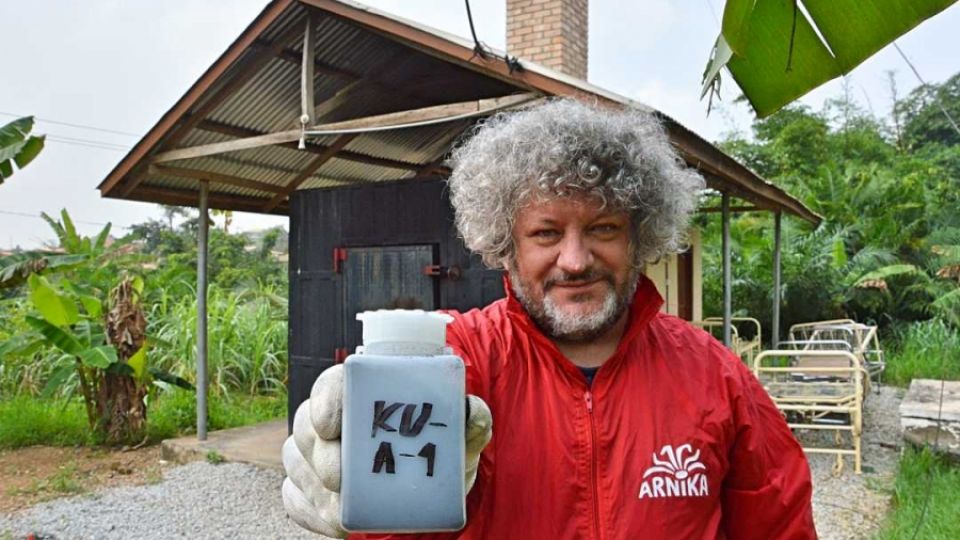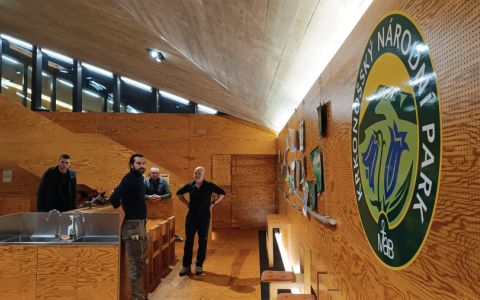Kumasi is the second largest city of Ghana and the capital of the Ashanti region. It is home to His Royal Majesty Asantehene ("Emperor-King") Otumfuo Nana Osei Tutu II. Located in Fort Kumasi, Asantehene's Palace and the Manhyia Palace, there is a hotel is 200 meters north-west from Accra. Nowadays, the largest open space market in Western Africa, Kejetia Market is a major tourist destination. However, one of the reasons we decided to visit Kumasi were because we found a medical waste incinerator...
A local hospital uses a furnace to get rid of various types of waste. It gets packed in ordinary plastic bags, describes the operator of the burning process. Benjamin is very keen to explain all details about the incineration. "We use a secondary combustion to get rid of the emitting particles," he points to a red burner attached to one side of the chimney.
The president of the hospital is similarly forthcoming when he talks about the waste management. For example, regarding how little he is interested in what happens to the potential remains of the incinerator. Every week, a private company carries a pile of ashes away. Where to? Nobody form the hospital really knows.
And what about inflammable material, such as glass flasks? For that, the solution is even easier-- they are piled up next to the incinerator, for which we received no further explanation.
See Arnika's photos: Another medical waste incinerator found at the hospital in Ashanti Region
Despite these evident flaws, hospital administration believes that the incinerator is a safe and optimal solution to the medical waste management. The president himself is responsible for bringing it into operation five years ago. Whether or not the waste is taken to the villages and farms a few hundred meters from the hospital has not been specified.
All in all, the analysis of the sampled ashes will tell us more. But it seems unlikely that even unflattering results would cause the local medical waste management to be required to change.







